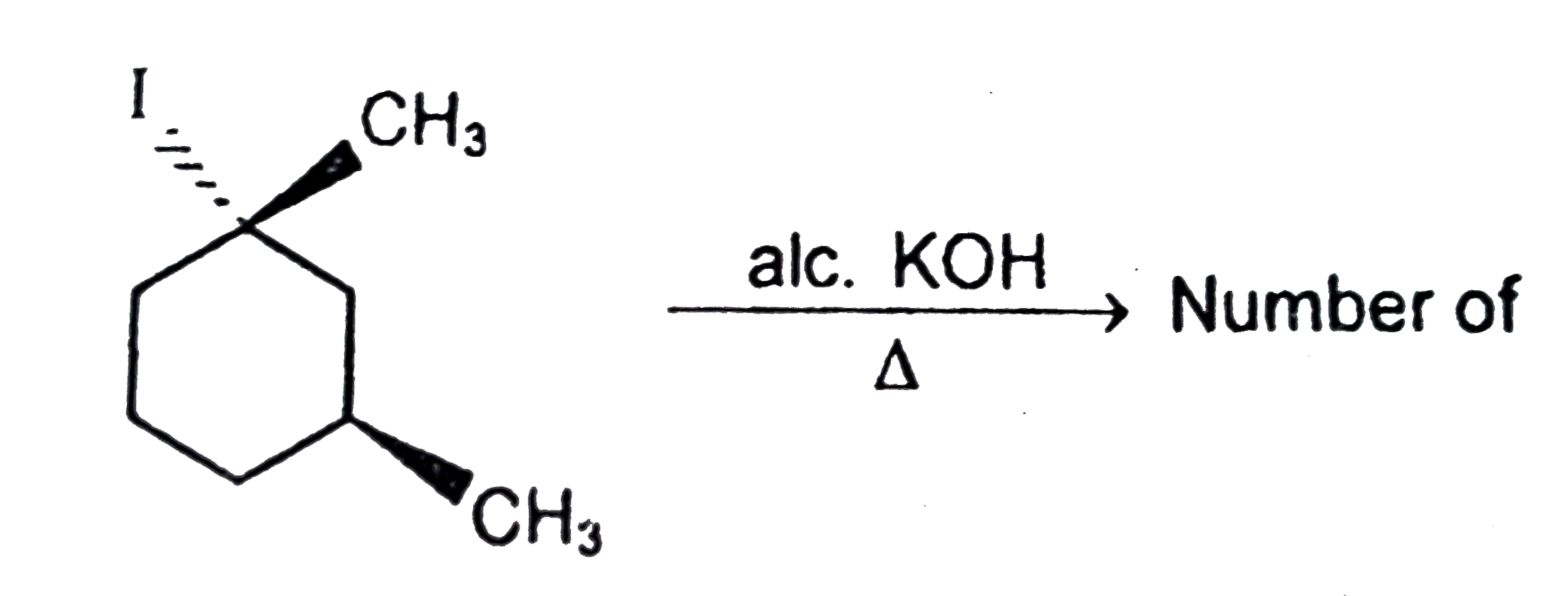The number of possible isomers of a square planar complex, [mabcd] is/are
4
3
2
1
The correct Answer is:B
To determine the number of possible isomers for the square planar complex (MABCD), we need to analyze the arrangement of the ligands around the central metal atom (M).
1. Identify the Complex:
The complex is (MABCD), where M is the central metal atom and A, B, C, D are the ligands.
2. Understand Square Planar Geometry:
In a square planar complex, the ligands are arranged at the corners of a square around the central metal atom. This means that the arrangement of the ligands can lead to different isomers based on their positions.
3. Count the Ligands:
We have four different ligands: A, B, C, and D. Since they are all different, we can consider the different arrangements of these ligands.
4. Determine Possible Arrangements:
For square planar complexes, the isomerism can arise from the different ways the ligands can be arranged. The key arrangements to consider are:
- A and B can occupy adjacent positions, while C and D occupy the other two positions.
- A and C can occupy adjacent positions, while B and D occupy the other two positions.
- A and D can occupy adjacent positions, while B and C occupy the other two positions.
5. List the Isomers:
- Isomer 1: A and B adjacent, C and D adjacent.
- Isomer 2: A and C adjacent, B and D adjacent.
- Isomer 3: A and D adjacent, B and C adjacent.
6. Count the Isomers:
After analyzing the arrangements, we find that there are a total of 3 distinct isomers for the square planar complex (MABCD).
Conclusion:
The total number of possible isomers of the square planar complex (MABCD) is 3.
The complex is (MABCD), where M is the central metal atom and A, B, C, D are the ligands.
In a square planar complex, the ligands are arranged at the corners of a square around the central metal atom. This means that the arrangement of the ligands can lead to different isomers based on their positions.
We have four different ligands: A, B, C, and D. Since they are all different, we can consider the different arrangements of these ligands.
For square planar complexes, the isomerism can arise from the different ways the ligands can be arranged. The key arrangements to consider are:
- A and B can occupy adjacent positions, while C and D occupy the other two positions.
- A and C can occupy adjacent positions, while B and D occupy the other two positions.
- A and D can occupy adjacent positions, while B and C occupy the other two positions.
- Isomer 1: A and B adjacent, C and D adjacent.
- Isomer 2: A and C adjacent, B and D adjacent.
- Isomer 3: A and D adjacent, B and C adjacent.
After analyzing the arrangements, we find that there are a total of 3 distinct isomers for the square planar complex (MABCD).
The total number of possible isomers of the square planar complex (MABCD) is 3.
Topper's Solved these Questions
Similar Questions
Knowledge Check
The number of possible isomers of dichloronitrobenzene is :
A3B4C6D8
The number of possible isomers [Pt(en)(NO2)2]
View SolutionThe total number of isomers for a square planer complex [M(F)(Cl)(SCN)(OH)] is:
View Solution
Number of possible alkene isomers will be:
View Solution(a) write all possible constitutional isomers of the compound Ru(NH3)5(NO2)Cl. Label the isomers as linkage isomers or ionization isomers.
(b) There are six possible isomers for a square planar palladium (II) complex that contains two NH3 and two SCN− ligands. Sketch the structure of all six, and label them according to the calssification.
View SolutionThe number of possible isomers of an octahedral complex [Co(C2O4)2(NH3)2]− is
View SolutionThe total number of isomers for a square planer complex [M(F)(Cl)(Br)(NO2)] is _________.
View SolutionThe total number of possible isomers of sqaure-planar [Pt(Cl)(NO2)(NO3)(SCN)]2− is :
View Solution
